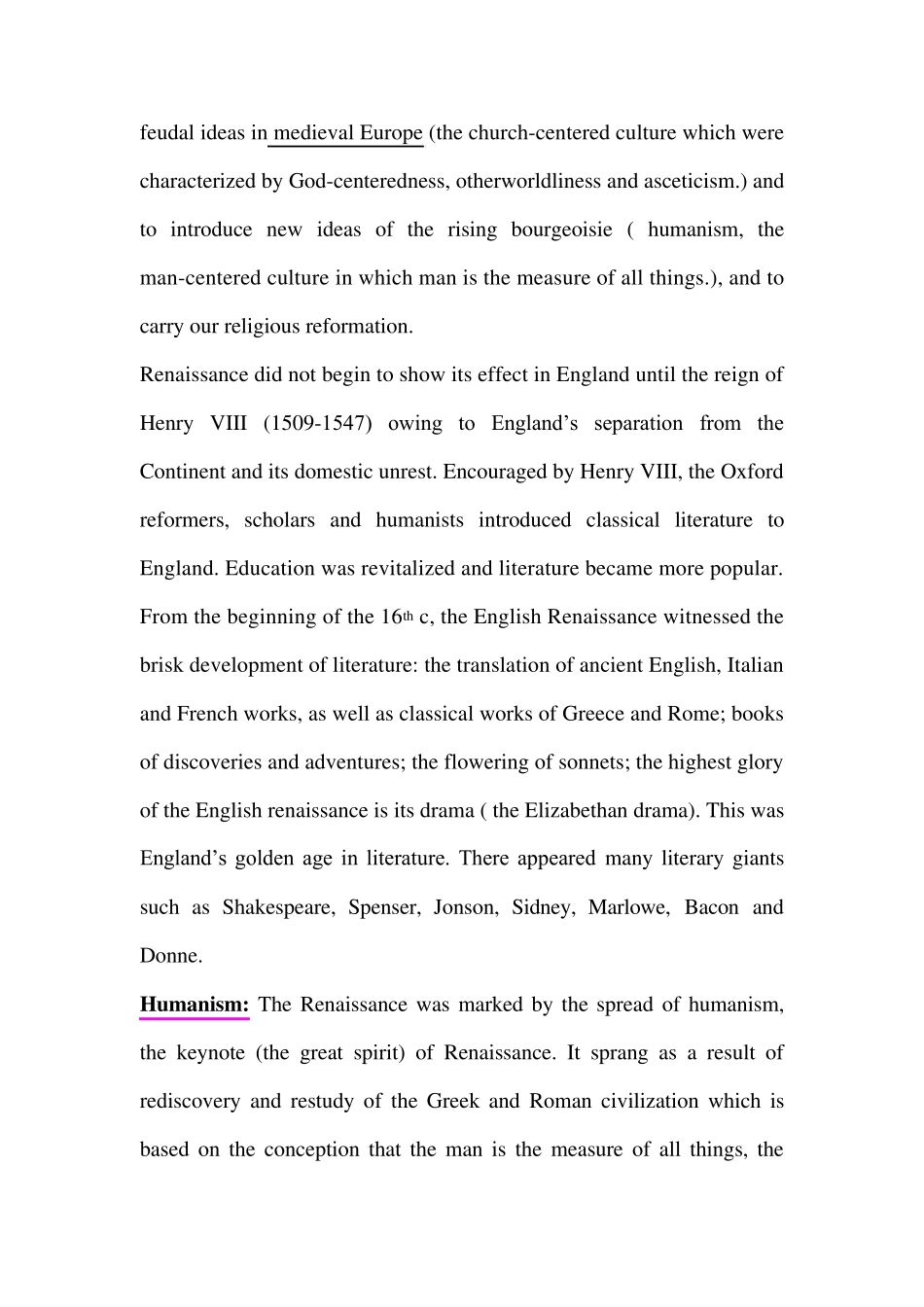The Renaissance Historical background: The breaking up of feudal relations and the establishing of the foundations of capitalism; The enclosure; the war of the Roses; the strengthening of the absolute monarchy; the rise of the bourgeoisie; the defeat of the Spanish Armada. New social and economic conditions brought about great changes in the development of science and art. So with the strengthening of new bourgeois national state, this period is marked by a flourishing of national culture known as the Renaissance. Renaissance: A rebith, revival of classical (Greek and Roman )arts, literature and sciences between 14th and mid 17th centuries in Europe, the greatest age of human accomplishments. Tw o striking features of the Renaissance 1) A thirsting curiosity for the classical literature; 2) The keen interest in the activities of humanity( People ceased to look upon themselves as living only for God and a future world and turned to admiration for human beauty and human achievement); Renaissance marks the transition from medieval to modern world, from feudal to capitalist, from religious to secular society. In this period the European humanist thinkers and scholars made attempts to abolish old feudal ideas in medieval Europe (the church-centered culture which were characterized by God-centeredness, otherworldliness and asceticism.) and to introduce new ideas of the rising bourgeoisie ( humanism, the man-centered culture in which man is the measure of all things.), and to carry our religious reformation. Renaissance did not begin to show its effect in England until the reign of Henry VIII (1509-1547) owing to England’s separation from the Continent and its domestic unrest. Encouraged by Henry VIII, the ...


